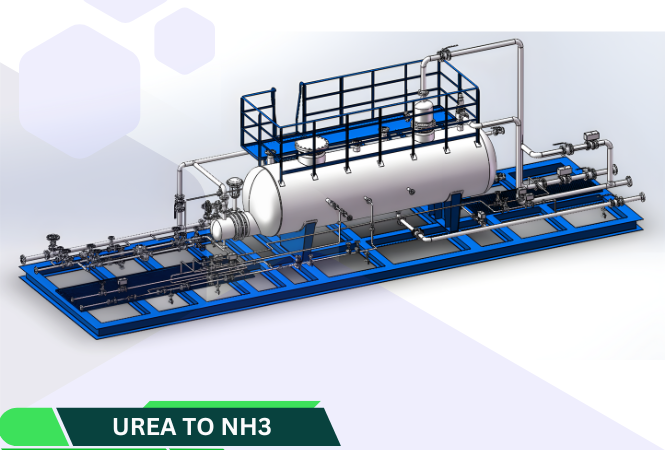
METHYLAMINE PRODUCTION
Methylamine production
The reaction of ammonia and methanol in the presence of a solid acid
catalyst forms a mixture of mono-, di- and trimethylamine (MMA,
DMA and TMA, respectively). They are important intermediates in the
manufacture of various industrial chemicals. The major outlets for the
respective amines include
■MMA: chemicals (n-methyl-2-pyrrolidone and n-methyl
diethanolamine), pesticides and explosives
■DMA: chemicals (dimethylformamide and dimethylacetamide), water
treatment chemicals and detergents
■TMA: animal food additives (choline chloride)
CATALYST
Currently, all the catalysts used for methylamine production yield the equilibrium composition of methylamines. Zeolites with narrow pores show enhanced selectivity for DMA. However, they have lower activity and stability than amorphous catalysts. The Nitto process for production of MMA and DMA is based on technology using zeolites. However, sizeable quantities of TMA are formed and therefore this process requires an amorphous silica alumina catalyst (in a separate reactor) to disproportionate TMA
PROCESS DESCRIPTION
Methylamines are synthesized from methanol and excess ammonia in a gas-phase reaction at 300–500ºC and at elevated pressure in the presence of a solid acid catalyst to form an equilibrium mixture
of roughly 25:30:45 MMA:DMA:TMA. With the market favoring DMA production, large quantities of MMA and TMA have to be recycled to maximize the production of DMA. This is the basis for the well-known Leonard process,
METHYLAMINES PROCESS FLOW
.png)

MA APPLICATION
Water Treatment: DMA is utilized as a raw material to produce agents that remove suspended solids for water clarification in industrial and municipal raw, potable and wastewater treatment plants.
Agriculture: MMA is used to make intermediates for a wide range of agricultural chemicals. These include herbicides, fungicides, insecticides, biocides and miticides
Electronics: DMFAis used to make many of the circuit boards essential to electronics. DMA can be used to produce an accelerator for epoxy resins in laminates for electrical equipment. Tetramethylammonium hydroxide from TMA is a photoresist stripper used in the manufacturing of semiconductors. TMA-hydrochloride is used to make specialty chemicals for the electronics industry. React with y-butyrolactone to generate N-methylpyrrolidone (NMP)
Oil and Gas: MMA and DMA are used to produce alkylalkanolamines, methyldiethanolamine (MDEA) and monomethylethanolamine (MMEA). MDEA is especially important in removing acidic components in natural gas, such as hydrogen sulfide, mercaptans, carbonyl sulfide and carbon monoxide. TMA is used to produce choline chloride for use in hydraulic fracturing (fracking) as a downhole clay stabilizer.
EQUIPMENT SUPPLY
DOWNLOADS


Add paragraph text. Click “Edit Text” to update the font, size and more. To change and reuse text themes, go to Site Styles.
UREA TO AMMOUNIA
.png)
Add paragraph text. Click “Edit Text” to update the font, size and more. To change and reuse text themes, go to Site Styles.
WFF EVAPORATOR
.png)
Add paragraph text. Click “Edit Text” to update the font, size and more. To change and reuse text themes, go to Site Styles.

